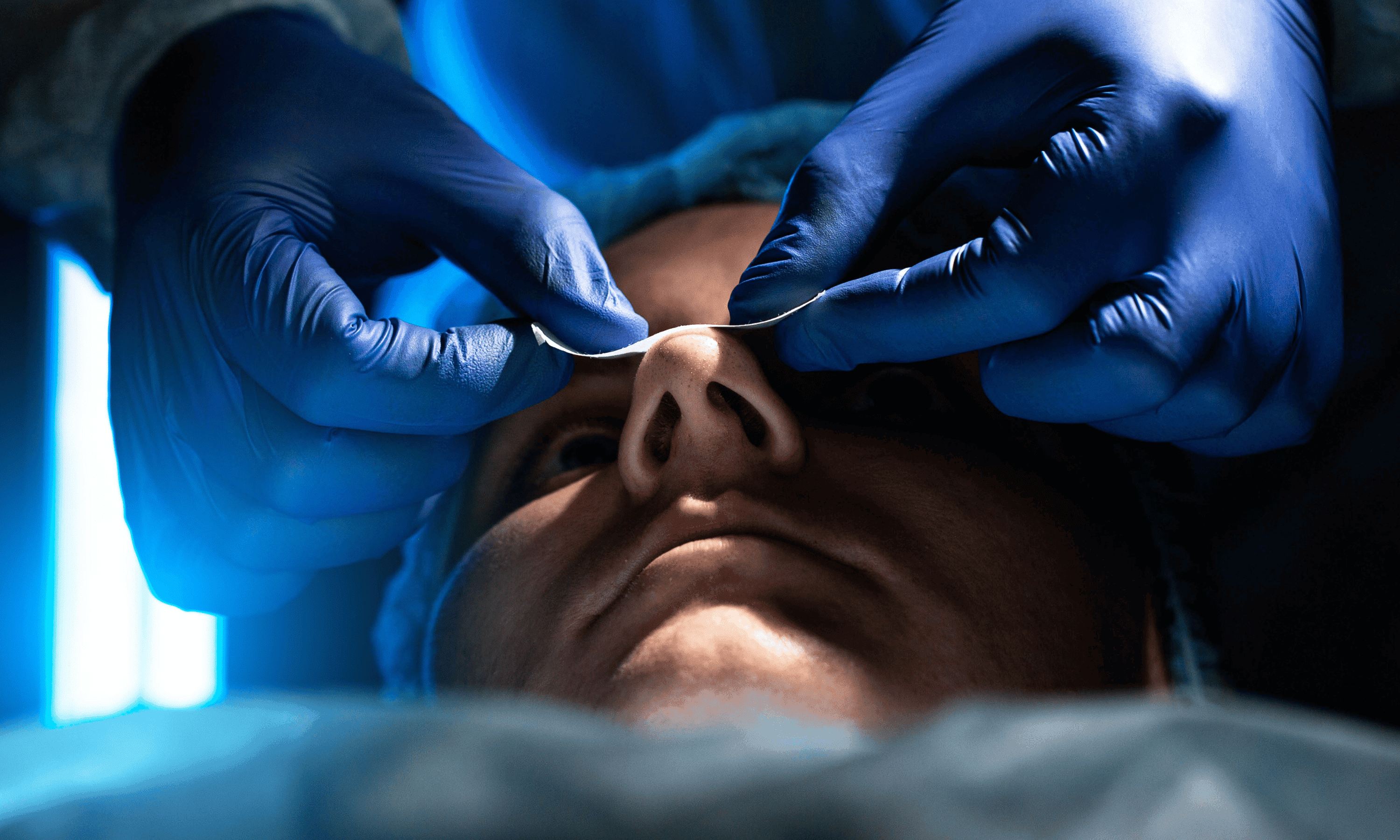
New nose, everything about septoplasty
For those grappling with nasal breathing difficulties, septoplasty emerges as a transformative solution. Septoplasty, a surgical procedure designed to correct a deviated septum, not only addresses functional issues but also offers aesthetic improvements. In this blog post, we'll delve into the details of septoplasty, exploring its purpose, the surgical process, and the comprehensive benefits it brings to individuals seeking nasal renewal.
Understanding septoplasty
Septoplasty is a surgical procedure designed to correct a deviated septum, which refers to the misalignment of the cartilage and bone structure that separates the nasal cavity into two nostrils. This misalignment, often attributed to genetic factors or previous injuries, can obstruct airflow, resulting in issues such as breathing difficulties, snoring, and, in more severe cases, chronic sinus problems. By addressing the root cause of these concerns, septoplasty not only restores optimal nasal function but also holds the potential to improve the overall aesthetic appearance of the nose.
The procedure involves the careful realignment of the septum, ensuring a straighter and more symmetrical structure. Beyond the functional benefits of improved breathing and reduced snoring, the cosmetic enhancements achieved through septoplasty can contribute to a more balanced and harmonious facial profile. This dual impact highlights the comprehensive nature of septoplasty, addressing both functional and aesthetic aspects to provide patients with a holistic improvement in nasal health and appearance.
Procedure overview
The septoplasty procedure involves a series of carefully planned steps to ensure optimal results and minimal disruption to the patient's life:
1. Consultation: A comprehensive consultation with an otolaryngologist or facial plastic surgeon is crucial. During this consultation, the surgeon evaluates the patient's nasal anatomy, discusses symptoms, and determines the best course of action.
2. Anesthesia: Septoplasty is typically performed under local or general anesthesia, ensuring the patient's comfort throughout the procedure.
3. Incision: In many cases, septoplasty can be performed entirely through the nostrils, eliminating the need for external incisions and minimizing visible scarring.
4. Septum adjustment: The surgeon carefully lifts the nasal lining, accesses the deviated septum, and makes precise adjustments to straighten and reposition the septal cartilage.
5. Closure: Once the necessary corrections are made, the nasal lining is repositioned, and any incisions are meticulously closed.
Benefits of septoplasty
1. Improved breathing: The primary goal of septoplasty is to enhance nasal airflow, alleviating breathing difficulties and reducing the incidence of snoring.
2. Reduced sinus issues: By correcting the deviated septum, septoplasty can contribute to a reduction in chronic sinus problems, such as congestion and infections.
3. Enhanced sleep quality: Many individuals experience improved sleep quality after septoplasty, as better nasal function leads to reduced snoring and better overall airflow.
4. Aesthetic improvements: While septoplasty primarily focuses on functionality, the procedure can also bring subtle aesthetic enhancements to the nose, contributing to a more balanced and harmonious facial appearance.
Recovery and results
Following septoplasty, patients may encounter temporary side effects such as swelling, congestion, and mild discomfort, all of which typically subside over the initial weeks of recovery. Strict adherence to the post-operative care instructions provided by the surgeon is crucial to ensuring a smooth and uncomplicated recovery process. In most cases, individuals find themselves able to resume normal activities within a week, with the full benefits of septoplasty becoming increasingly apparent as the healing process unfolds.
Septoplasty, hailed as a surgical marvel for nasal renewal, stands as a comprehensive solution for those contending with breathing difficulties and associated issues. A consultation with a qualified otolaryngologist or facial plastic surgeon is essential for gaining a thorough understanding of the procedure, potential risks involved, and realistic expectations for the outcomes. With the transformative power of septoplasty, individuals can not only breathe easier and enjoy improved nasal function but also experience the holistic benefits of a well-balanced and harmonious facial profile, marking a significant improvement in both health and aesthetics.
Septoplasty costs around the world
Rhinoplasty (nose job) costs can vary significantly depending on the country and region where the procedure is performed. Below is a comparison of prices in 20 different countries, converted into US dollars (USD) for clarity:
- United States: $5,000 - $15,000 USD
- United Kingdom: £4,000 - £10,000 GBP (approx. $5,300 - $13,200 USD)
- Canada: $7,000 - $15,000 CAD (approx. $5,500 - $11,800 USD)
- Australia: $8,000 - $20,000 AUD (approx. $5,800 - $14,600 USD)
- Germany: €4,000 - €10,000 EUR (approx. $4,500 - $11,200 USD)
- France: €4,000 - €8,000 EUR (approx. $4,500 - $9,000 USD)
- Brazil: R$10,000 - R$25,000 BRL (approx. $1,900 - $4,700 USD)
- Mexico: $40,000 - $100,000 MXN (approx. $2,000 - $5,000 USD)
- Japan: ¥500,000 - ¥1,500,000 JPY (approx. $4,600 - $13,700 USD)
- South Korea: ₩5,000,000 - ₩15,000,000 KRW (approx. $4,300 - $12,900 USD)
- India: ₹100,000 - ₹400,000 INR (approx. $1,300 - $5,400 USD)
- South Africa: R40,000 - R100,000 ZAR (approx. $2,500 - $6,400 USD)
- UAE (Dubai): 20,000 - 50,000 AED (approx. $5,400 - $13,600 USD)
- Saudi Arabia: 20,000 - 50,000 SAR (approx. $5,300 - $13,300 USD)
- Russia: 150,000 - 400,000 RUB (approx. $2,000 - $5,400 USD)
- China: ¥30,000 - ¥80,000 CNY (approx. $4,700 - $12,500 USD)
- Spain: €4,000 - €8,000 EUR (approx. $4,500 - $9,000 USD)
- Italy: €4,000 - €9,000 EUR (approx. $4,500 - $10,100 USD)
- Netherlands: €4,000 - €8,000 EUR (approx. $4,500 - $9,000 USD)
- Switzerland: CHF 8,000 - CHF 20,000 per implant (approx. $8,700 - $21,800 USD)
These prices are approximate and can vary based on factors such as the complexity of the procedure, the surgeon's experience, and the clinic's location within each country. It's essential to consult with qualified professionals and thoroughly research before undergoing a rhinoplasty procedure.
Questions patients can ask when considering septoplasty
Septoplasty is a surgical procedure used to correct a deviated septum, improving nasal breathing and overall nasal function. If you are considering this procedure, here are some helpful questions to ask during your consultation:
- What specific issues can septoplasty address in my case?
What symptoms or problems can septoplasty correct, such as breathing difficulties or nasal congestion? - What is involved in the septoplasty procedure?
Could you explain the surgical techniques used in septoplasty? How will my septum be reshaped or straightened during the procedure? - What are the risks and potential complications associated with septoplasty?
What are the common risks and complications associated with septoplasty, such as bleeding or infection? How are these risks managed? - What results can I expect from septoplasty?
What improvements in nasal function or breathing can I realistically expect after the procedure? Are there any limitations to the results? - What is the recovery process like after septoplasty?
How long does it typically take to recover from septoplasty? What should I expect in terms of discomfort, downtime, and when can I resume normal activities? - What are the costs associated with septoplasty?
What are the estimated costs for septoplasty, including pre-operative tests, the procedure itself, and any post-operative care? Are there any additional costs to consider? - What is your experience performing septoplasty?
How many septoplasty procedures have you performed? Are you board-certified in otolaryngology or facial plastic surgery?
These questions can help you gain a thorough understanding of septoplasty and make an informed decision about whether this procedure is suitable for your nasal health needs. Discussing your concerns openly with a qualified ENT surgeon will ensure you have realistic expectations and achieve optimal outcomes.

